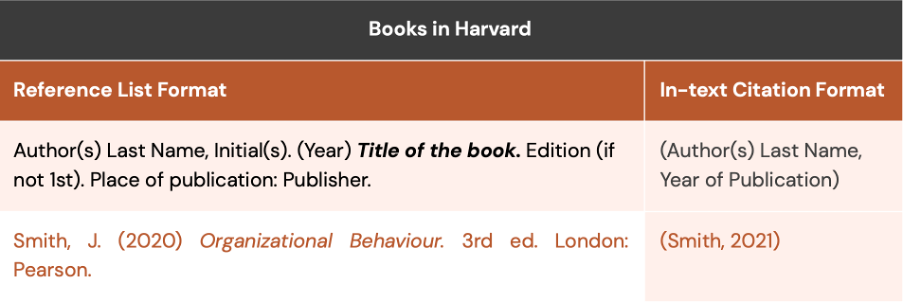Summary
UK students are often required to use the Harvard referencing style, which follows an author-date format. It includes in-text citations (e.g., Smith, 2020) and a full reference list at the end of the document. Each source type—such as books, journal articles, websites, videos, and lectures—has its own citation format.

Students in UK universities are often required to provide references in their assignments in the Harvard Style. This style is known as the author-date style of citation and includes two main components:
In-text citation (in the body of your writing)
The format usually looks like this: (Author’s Last Name, Year).
Full reference list (at the end of the document)
The format depends on the source used.

The most common source types with examples
Tips for Harvard Referencing
When writing your reference within the text, you can use the following styles:
Narrative Style (Author mentioned in sentence)
When you write the author’s name in your sentence and put the year in parentheses.
Here are the two most common options:
“According to Smith (2021), students perform better when they receive regular feedback.”
“Jones (2020) argues that digital learning improves accessibility.”
If you’re quoting directly, include a page number:
According to Smith (2021, p. 45), “feedback is a powerful tool for improvement.”
Parenthetical Style (Author and year at the end)
Use this when you don’t name the author in your sentence.
“Feedback helps improve performance (Smith, 2021).”
Differences between Reference List and Bibliography:
A Reference List includes only the sources that you have directly cited or referred to in your assignment.
A Bibliography includes all the material you consulted during your research, even if you didn’t cite it in your assignment.
